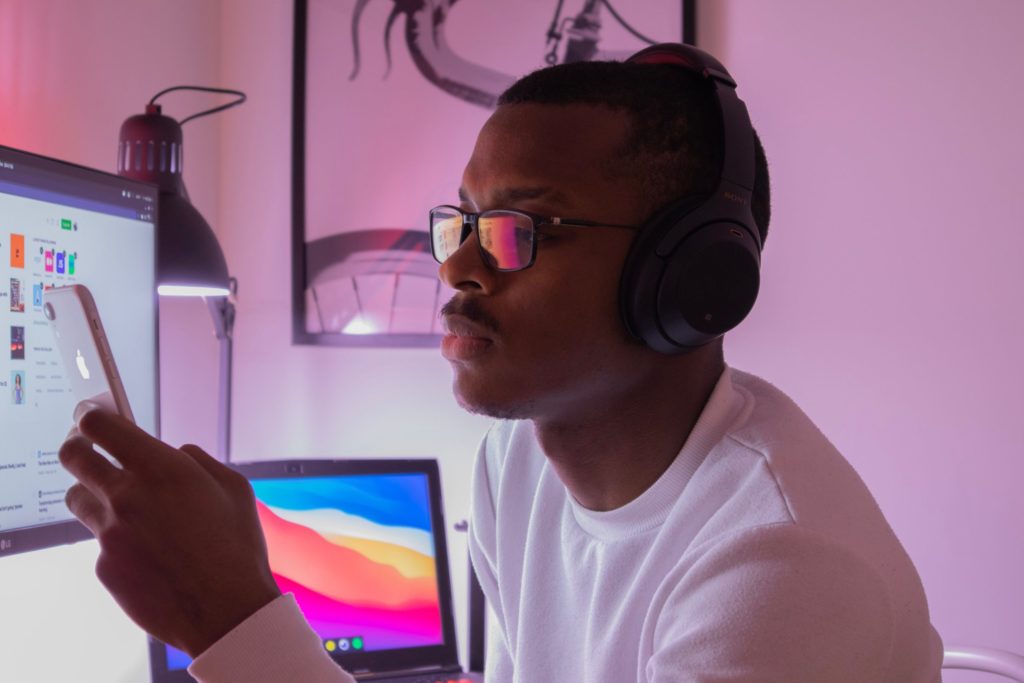Depending on whether you’re an eLearning Developer looking to record a new-hire training video, an entertainment company wanting to narrate its next blockbuster, or a wellness guru composing a new meditation video, you likely have different needs when it comes to voiceovers. In this article, we break down the most popular voiceover styles and how to locate the right one for your next project.
Corporate
One of the places that WellSaid Labs sees (er, hears) voiceovers used most commonly is in internal corporate content. Many companies rely on voiceovers for their learning and development content. For example, they may develop short videos that teach new hires about company protocols during employee onboardings. Or, they may create training programs about important job skills in manufacturing, analytics or healthcare.
Lorman Education Services estimates that organizations with poor on-boarding processes are twice as likely to experience employee turnover. Retention rates rise 30 to 50 percent for companies with strong learning cultures. It’s never been more important to be competitive with learning and development content. A strong voiceover is one of the best ways to keep employees engaged from the start.
Education
New York University estimates that the e-learning market is expected to be worth $200 billion by 2024. Online courses have taken the world by storm, both for enrolled students and for people simply looking to learn a new skill online like photography, business or social media.
Many online course creators rely on narration for their courses, and ai text to speech technology can provide the most cost-effective, efficient solution to easily add voice to training videos.
Schools and universities also rely on narration for educational videos. With the COVID-19 pandemic, many classes moved from in-person to online learning. EducationData.org estimates that the pandemic affected 1.6 billion students, hastening the transition toward online learning.
Advertising and commercial
With advertising budgets increasing across all digital formats, there has never been a higher demand for commercial voiceovers. eMarketer estimates that online advertising spend will reach $982.82 billion by 2025.
Companies need voiceovers to bring streaming audio and video commercials to live. Try watching a commercial with the sound off and note how engaging it is. Voiceovers add compelling sound to what would otherwise be just flat, life-less visuals.
Narration
Advertising isn’t alone in the digital audio revolution—even paperback books are transitioning to audio formats. The 2021 audiobook market has a $1.1 billion market size, having grown 10 percent over the past 5 years. People listen to audiobooks on their commutes, at the gym, while cleaning the house, or any number of other places. They rely on voiceover to use the right tone, pace and personality to fit the book and make it easy to follow along.
Character, animation and film
Voiceovers are also needed for animated movies, video games and children’s films. Consider Shrek, Toy Story or Avatar. Character narration can happen via humans morphing their voice to fit the characters. It can also happen by text-to-speech avatars who are naturally built with the desired read styles for a script. An estimated 22.3% of voiceover work in North America relates to animation. That number jumps to 53.2% around the rest of the world.
Biography
Similar to narration, voiceovers are also used to narrate biographies and life stories of celebrities and politicians. This could span full-length feature films and documentaries or short video clips and gossip sites.
The read style, pace, and tone of a biography narrator influences how people perceive the person being featured. For example, you wouldn’t necessarily choose a rough, gravely voice to describe the life of Dolly Parton, but you might for The Rock or Sylvester Stalone.
Health or inspiration
Many health companies and coaches use voiceovers for their recipe tutorials, health apps, or meditation videos. A voiceover can match the tone of the content, whether the brand wants a tough boot camp sergeant, a calming meditation teacher, or even a festive Italian chef. Because recording a narration takes a ton of time, many health professionals are finding it easier to outsource to another voice actor or text-to-speech technology.
How to find the right voiceover for you
There are a few factors to consider in choosing the right voiceover talent for your project.
Time
The first factor is time. If you’re on a time crunch, coordinating with a voiceover agency can involve time demoing voice actors, booking recording studies, and recording retakes, whereas a human-sounding ai text to speech platform could help you do all of this in one click.
Budget
The second factor is budget. Many companies try to keep costs down by using an internal employee to record their voiceover content. However, this can siphon time away from other projects and rack up fees similar to using a full voiceover agency. On average, WellSaid Labs found that, for every 60 minutes of script, companies spend $900 for an internal employee to record voiceovers, while they spend $1,249 for a voiceover agency. A cheaper option could be ai text to speech, which would cost around $11.76 for that same 60 minutes.
Voice
Last but not least is the almighty voice. You want to make sure that the voice you choose fits the context of your content, whether you want a voice to sound serious, serene, stoic or anything in between. AI text to speech enables you to demo Avatars with your actual script, so you can either choose the one that’s best for your project or create a new voice altogether.
Ready to hear for yourself? Demo samples of actual ai text to speech.
Credits
Photo by Nubelson Fernandes on Unsplash

